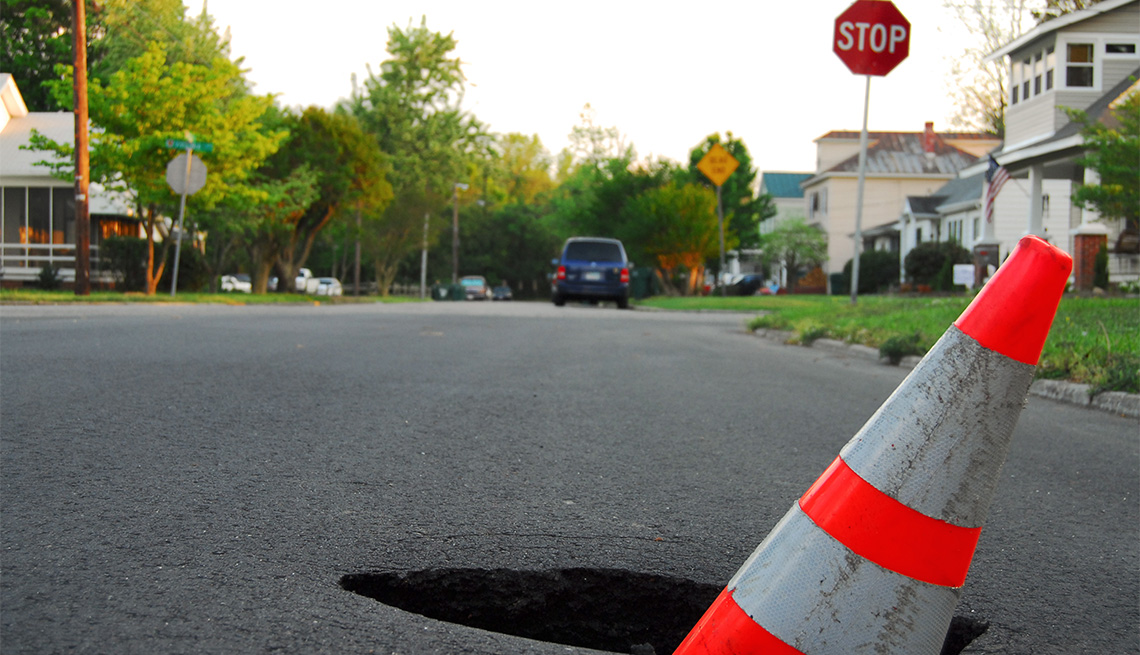AARP Hearing Center
Springtime weather differs across the country, so driving conditions and cautions differ, too.
"The things you're looking out for in one state might be different than in another,” AAA spokesman Andrew Gross says.
If your spring is rainy, a common situation, consider key equipment first. If it's not up to snuff, you're swimming upstream from the beginning.
Check your tires
Tires are your only connection with the road. Be sure the tread is deep enough to channel away water on the road instead of letting it build up under tires.
A good measure is a quarter inserted in the groove with George Washington's head down. If you can see the top of his head, the tread is less than one-eighth of an inch, and you should replace the tire soon.
The penny test, seeing all of Abraham Lincoln's head above the tread, means tread depth is less than one-sixteenth of an inch. New tires have about five times that much tread.
Flunking the penny test requires immediate attention: Forty-two states have laws requiring tires to have at least one-sixteenth inch of tread, AAA says. Idaho's and California's laws require at least a thirty-second of an inch of tread, and six states have no requirements.
From a safety standpoint, too little tread can cause tires to float uncontrollably on the pavement surface, called hydroplaning. And the newer the tire the better.
"On average, new tires have an improved stopping distance of nearly 90 feet, more than the length of a semitrailer truck,” according to a 2018 study from motorists’ nonprofit AAA, which changed its name in 1997 from the American Automobile Association.
Tires age 6 and older, no matter what their tread depth, need to be replaced because the rubber starts to deteriorate, manufacturers say. To find out your tire's birthday, look below the DOT (Department of Transportation) often embossed on the inside of the tire where it's not easy to see. Tires for vehicles of less than 10,000 pounds also have part of the code on the outside, where you can take a look more readily.
The final four digits of the code, which has been 13 characters since 2015, are its date of manufacture, based on the week of the year, and last two digits of the year itself.
Assess your windshield wipers
Wiper blades are key to vision. Blades are easy to overlook — until you need them to see through rain and muddy road spray from other cars. Make sure they're not loose on the wiper arms and aren't split.
Clean the blades with a paper towel or cloth soaked in windshield washer fluid or a mild detergent. Then wash the windshield itself, taking care to dislodge dried bugs, road grime and sap.
Take a test swipe while sitting in your driveway after wetting your windshield. If you have spots where your wiper blades are brittle with age, leaving patterns on your glass and not merely holding onto debris, it's time to spring for a new set.
Don't forget to do the same test on any rear window with wipers.





































































